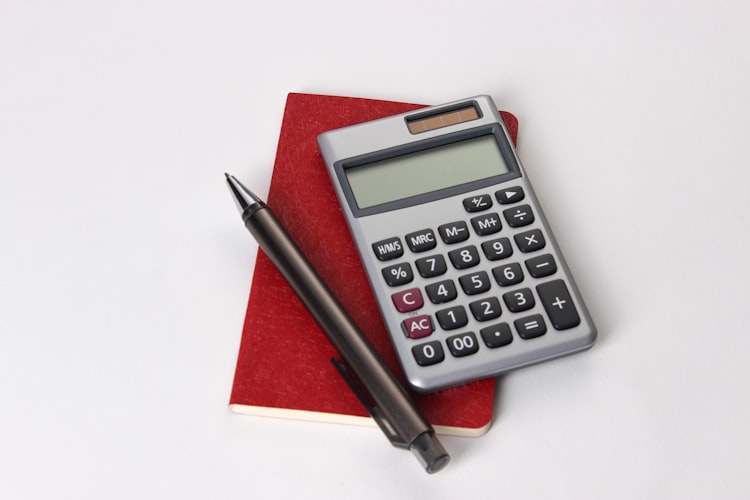Understanding the Logic Behind Betting Odds
If you want to give yourself the best chance to beat the bookmakers and come away with some winnings, you need to arm yourself with as much knowledge about how gambling and betting works.

If you want to give yourself the best chance to beat the bookmakers and come away with some winnings, you need to arm yourself with as much knowledge about how gambling and betting works.
One of the first things you should be learning is exactly how the betting odds work since you’ll be using them every single time you place a wager. There are a few different ways of displaying betting odds, which this article will touch on briefly. If you’d like a more in-depth guide on understanding the different types of odds, bestcasinosites.net do a great job of explaining them in their article.
The primary purpose of this article is to give you insight into how bookmakers and gambling providers calculate odds. Once you know how the odds really work, you can use them to place smarter and, hopefully, more profitable bets.
How to understand different types of betting odds
There are three main ways that you’ll see betting odds displayed. If you’re betting online, the chances are you will come across all of them at some point, so it is worth knowing how to understand them.The three odds types are:
- Fractional odds AKA British odds
- Decimal odds
- Moneyline odds AKA American odds
Below you’ll find a brief and simple overview of how each type is displayed.
Fraction/British odds
This type of odds might also be called “traditional odds” and tend to be written as fractions such as 3/1. Fractional odds are expressed as ratios, so 3/1 would be called “three-to-one”. You might also see them written as 3-1.
The first number in the fraction represents how much you would win when wagering the amount shown in the second part. So, 3/1 means you will receive 3 units for every 1 unit you wager. A £10 bet would receive £30 in winnings plus your original stake.
Fractional odds can get a little more complicated as you’ll also see odds like 11/10, which means you will win 11 units for every 10 units wagered.
The more complicated fractional odds like this can be divided to display how much you will be winning for every unit you wager. Using 11/10 as an example, you divide 11 by 10 and get 1.1, so you now know you’ll be winning 1.1 units for every unit you bet.
When the larger number of fractional odds is on the left side, it means your selection is “odds against”, so the winnings will be higher than the stake. If the fraction is displayed with the larger number on the right, it is known as “odds on”, so your winnings will be lower than your initial stake. “Odds on” events are ones that the bookmakers deem are more likely to happen.
Decimal odds
Most people find decimal odds much more straightforward to interpret than fractional odds because the decimal shows exactly how much the total payout will be for every unit you stake. Decimal odds of 2.5 mean you will receive 2.5 units back for every s1 unit you stake. As a result, a £100 bet will pay you back £250, which is £150 in profit.
Moneyline/American odds
Moneyline odds are displayed as either a positive or a negative number such as +150.
When the odds show a positive number, they are displaying how much you will win based on a £100 bet so odds of +150 gives you winnings of £150 plus your original stake.
If a negative number is shown, it represents the amount you need to stake in order to win £100. So, odds of -150 means you need to bet £150 in order to win back £100 plus your original stake.
The logic behind betting odds: How do bookmakers work them out?
To understand how bookmakers set their odds, you need to be aware that they set them very carefully in order to almost guarantee themselves a profit. The betting providers are not predicting winners like us punters are.The bookmakers take a mathematical approach to ensure all their markets have a profit margin built-in. To achieve their profit margin, the bookmaker needs to make sure the odds they give do not truly reflect an event’s actual probability of happening.
Let’s use an example of a team sport where you have the chance of 3 possible outcomes: the home team wins, the visiting team wins, or they tie. In this situation, the probability of each outcome happening is 33.3%, which is also equal to 2/1 if you’re using fractional odds.
However, no bookmaker will offer 2/1 odds because they need to give themselves that profit margin. What the bookmaker might do is offer 7/4 odds on each of the events, which would equal a 36.4% chance of each event happening.
But when you add all 3 or our new probability percentages together, you get 109.2%. The additional 9.2% is the profit, also called the overround, the bookmaker will make if they were to take the same number of bets on all 3 potential outcomes no matter what happens in the match.
Why do bookmakers have different odds?
There is a fine line for bookmakers to walk when setting odds. Of course, they need to factor in their profit margins, but they still need to make the odds attractive enough for people to want to place bets with them.Although the bookmakers take the mathematical approach above to ensure they make a profit, there still needs to be a judgment call based on what events they believe are more and less likely to happen in the real world.
Another factor that may cause odds to change is the amount of money a bookie has taken on a particular market. If a bookmaker starts to receive a very large number of bets on a market event, they will sometimes reduce the odds to prevent large losses if the event in question happens.
As a result, you will see differing odds between bookmakers because they won’t all see things in exactly the same way.
Related:
Casino & Sports Links on Feedinco
- ⚽️ Betway Prediction
- ⚽️ 1xBet Prediction
- Best Casino Bonus
- Online Casino Bonus
- Mobile Casino Bonus
- New Online UK Casinos
- Football Free Bets
All Sports Predictions
- ⭐ Super Tips
- 🔥 HOT Football Tips
- ⚽️ Sports FREE Bets
- ⚽️ Best Betting Sites
- ⚽️ Sure Tips for Today
- ⚽️ Football Tips
- ⚽️ Daily ACCA tips
- ⚽️ Tip of the Day
- ⚽️ Soccer Prediction
- ⚽️ Winning Predictions
- 🔥 Best Prediction Site
- 🔎 Accurate Soccer Predictions
- 💸 Jackpot Predictions
- ⚽️ TODAY BETTING TIPS ⚽️
- BTTS Today
- Over 2.5 Prediction
- Full time Prediction
- Double Chance Prediction
- ⚽️ TOMORROW BETTING TIPS ⚽️
- Both Teams to Score Tomorrow
- Over 2.5 Goals Tips
- HTFT prediction
- 12 Betting Tips
- 🎾 TENNIS TIPS 🎾
- 🎾 Tennis Betting
- 🎾 Tennis Tips 1x2
- 🎮 ESPORTS TIPS 🎮
- 🎮 eSport Betting
- 🎮 eSports Predictions
- 🎮 eSports Betting Tips
- 🎮 Counter Strike Predictions
- 🎮 Dota 2 Tips
- 🎮 Overwatch Tips
- 🎮 LoL Tips
- ⭐ Casinos ⭐
- New Online UK Casinos
- Casino Free Bets NO deposit
- New NO Deposit Slots + FREE spins
- NEW Casino NO Deposit Bonus Codes
- Best Slot Sites UK
- Free spins NO deposit Mobile casino
- FREE Roulette Spins NO deposit
- Best Online Casino NZ [free pokies]
- Best Online Casino Canada
- FREE Casino Slots South Africa [no deposit bonus]
- Online Casino Games India [Online Casino, Online Roulette]
- Best Casino Bonus
- Online Casino Bonus
- Mobile Casino Bonus














































